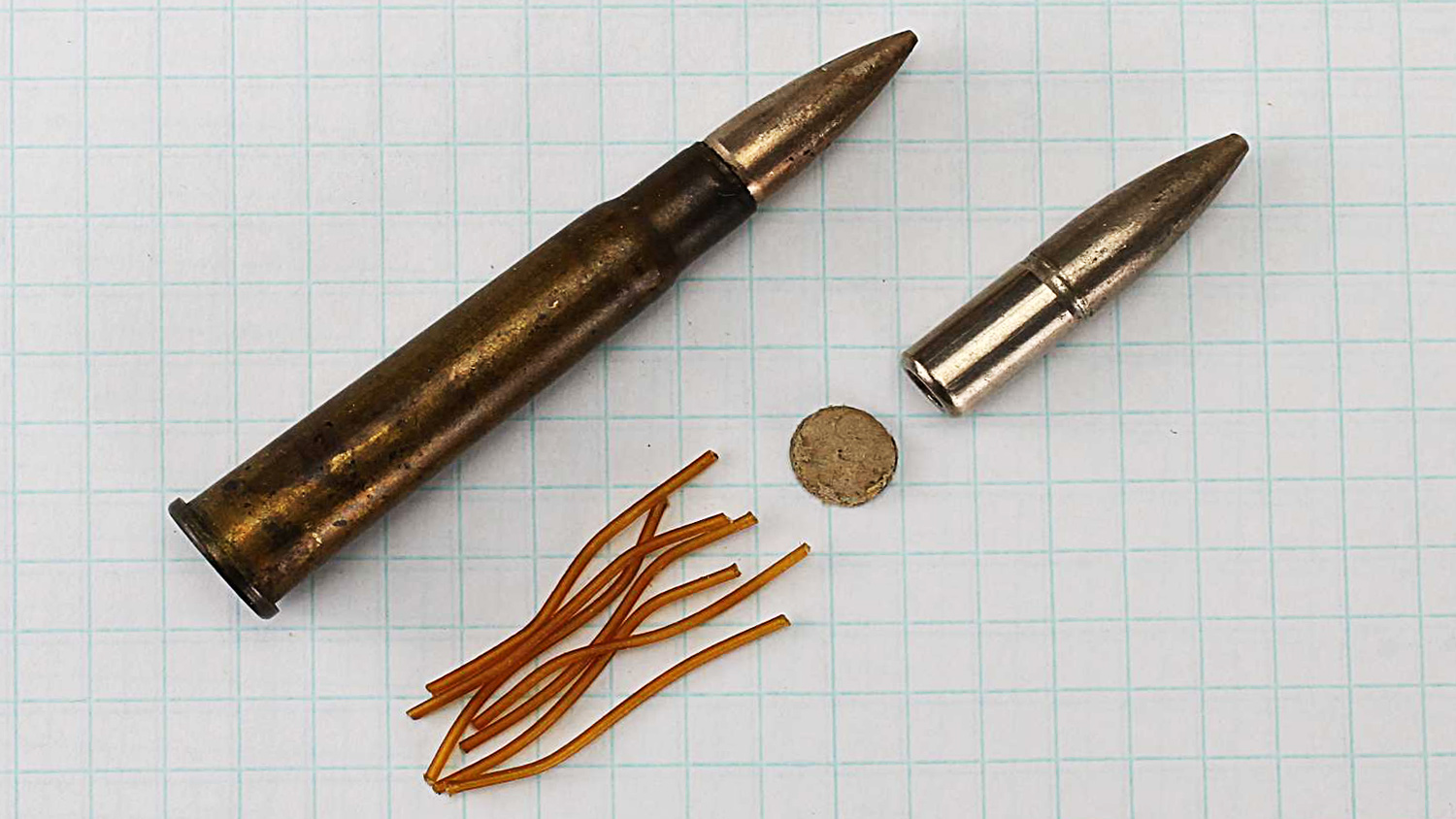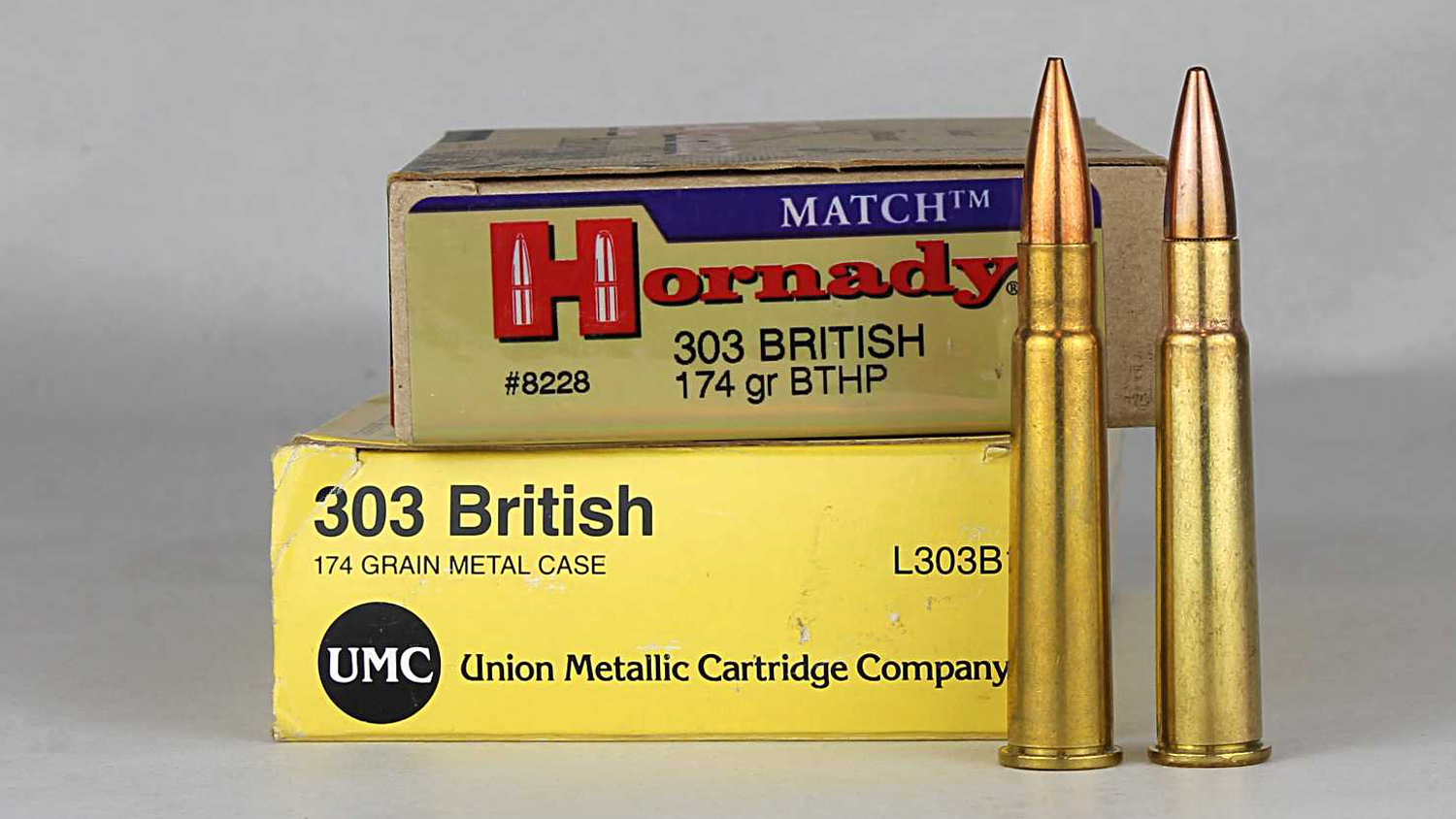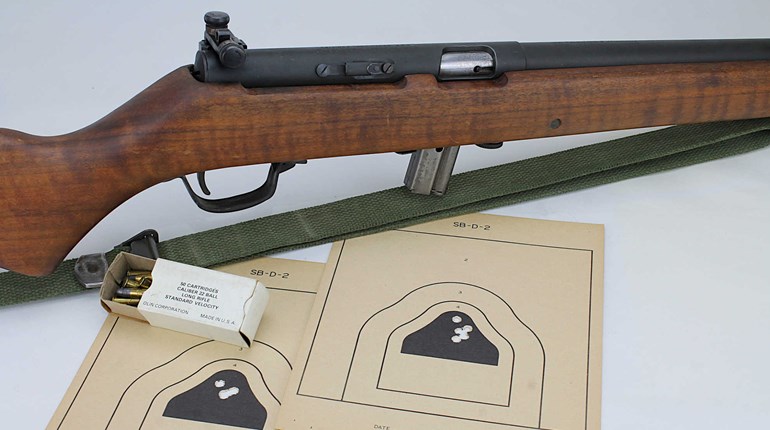
The Short, Magazine Lee Enfield rifles of the British Empire are among the most prevalent at Vintage Military Rifle competitions. Hardly possessing a reputation for precision shooting, it’s a good bet the SMLE “Enfield” enjoys its popularity due to the sheer ubiquity of the rifle and its cartridge.
Introduced in 1902 and fielded by Great Britain and her Commonwealth countries, including Canada, Australia, New Zealand, South Africa and India, millions of No. 1 and No. 4 Enfields appeared on battlefields around the world for the next 60 years. A flood of surplus Enfield rifles hit markets after WWII, and the Enfield’s cartridge, the .303 British, remains in non-stop production today, though mostly as hunting fodder.
Black to smokeless
Inducted into military service in 1888, the British had developed their black powder .303 British (aka .303 Lee Enfield, .303 Lee Metford, .303 Vickers and 7.9x56Rmm) cartridge for the also-new Magazine Rifle, Mark I of 1889, at the cusp of the world’s changeover to smokeless powder. A year later, British chemists introduced cordite, which became the original smokeless powder loaded in the .303 British cartridge. Commonly manufactured in the form of “sticks” looking rather like toothpicks, ammunition manufacturers would cut sticks to length, pack them in the case, and top them with a cardboard wad before seating the bullet. Cordite drove a .311-inch, 215-grain MKII round nose bullet at just under 2000 fps. By WWI, bullet weight had dropped to 174 grains in the MKVII FMJ spitzer bullet, with muzzle velocity upped to 2440 fps.

Though cordite performed with desirable stability even in the heat of the tropical areas of the British Empire, its relatively high burning temperature eroded throats and bores and was suspect in weakening Enfield rifle barrels. The British military replaced cordite (or perhaps more correctly, augmented its use) with DuPont #16 nitrocellulose powder in 1916, and by WWII a modified cordite (Cordite M.D.) with a lower burning temperature came into use. Some nations fielding the Enfield continued using cordite in the cartridge into the Cold War.
The .303 British loading changed again during WWII with the introduction of a ball powder made specifically for the cartridge, WC 846. War’s end saw an enormous surplus of the powder made available to handloaders via powder company Hodgdon, who relabeled it, “Western Ball Type C” and then, “BL-Type C;” today we know it as BL-C(2). Ironically, here in a future of new and better choices, current load data utilizing BL-C(2) in the .303 British is nearly nonexistent.
Best powders
So, what powders do work well in the cartridge? Checking a variety of load data sources, powders tested ran in burn rate from approximately IMR 3031 on the fast side to Norma MRP on the slow end; encompassing 47 different powders. Narrowing that considerably, several sources, including master handloader Ken Waters and the Sierra reloading manual, pick IMR 4064 as a top choice with bullets of 150 to 180 grains. For 174- and 180-grain bullets, IMR 3031 and IMR 4895 show up repeatedly in various load data. In the Sierra manual, a maximum 41.6 grain charge of IMR 4895 will launch Sierra’s 174-grain MatchKing at 2450 fps. Frankly, if you already load non-magnum .30 caliber, you’ve probably got a powder on the shelf suitable for the .303 British.
Bullets for Brits
Rifling twist rates for the Enfields is one turn in 10 inches (1:10), the same as for the American battle rifles firing .30 caliber M2 Ball, which is a 150-grain bullet of .308 inch. While some may question whether 1:10 is at the edge of marginality for stabilizing the heavier, larger diameter British 174-grain, .311-inch bullet—history has proved it completely adequate.
Americans often assign the rifling groove depth and hence bullet diameter to the cartridge designation, as in “.308 Winchester”—.308 inch essentially being both bullet diameter and distance measured across the bore to the bottom of the grooves. In the typical English custom of naming cartridges, the “303” of the .303 British refers, not to the groove diameter, but to the distance measured across the lands of the rifling, the generally accepted correct reference to the “bore.” Ostensible groove depth and bullet diameter of the Brit is actually .311 inch. To ensure a tight fit, bullets are often .312 inch, though of course .311 inch bullets for the Brit are out there too.

Ignoring hunting-style bullets, for Vintage Military Rifle (VMR) competition appropriate FMJ bullets for the .303 British are available from Hornady (.312-inch, 174-grain BTHP), Prvi Partizan (174-grain FMJBT) and Sierra (.311-inch, 174-grain HPBT MatchKing). Lapua offers a .310-inch, 200-grain FMJ. Missouri Bullet Company has a .312-inch cast FN bullet featuring a Hi-Tek 2 Extreme Coating in a lighter-than-usual 167 grains. Cost is about $40 per 250. Lighter bullets may or may not perform well in your particular vintage military Enfield, as “lighter” also equates to “shorter,” and problems associated with bullet seating depth—such as insufficient neck tension, excessive bullet runout and a long “jump” to reach the rifling, especially in a rifle with an eroded throat—can negatively impact precision (accuracy), even at 200 yards. For this reason, 150-grain bullets may disappoint in a worn battle rifle.
Given the erosive nature of cordite, as well as age, use, maintenance and other factors, Enfield rifle bores may have groove depths more than .311 or .312 inch. When in doubt—say, when your old battle rifle refuses to keep any load at all within the black of an NRA High Power 100-yard reduced target—the usual procedure of slugging the bore won’t work with original Enfields because barrels have five lands and grooves, so there are no two “lands” directly opposite each other on the slug for measuring groove depth. Cast lead bullets may be your solution, as lead bullets will obdurate somewhat upon firing to fill rifling grooves and improve precision. For bullet casters, Lyman has an excellent two-cavity mold (#314299) that casts a .314-inch, 200-grain RN gas check bullet. If you don’t cast, Buffalo Arms has a hard cast .314-inch, 205-grain RN gas check bullet already done up for you at $56 per 100 at this writing. You’ll probably want to keep lead bullet velocity below 1900 fps to prevent possible leading of the bore, but with VMR competition fired at such short 100- and 200-yard ranges, high velocity isn’t high on our list of competition needs.
Brass and dies
It appears from online catalogs that Winchester and Remington have discontinued manufacturing .303 British brass, but other makers such as Prvi Partizan (PPU headstamp) and Hornady still offer it. Online retail prices run about $24/100 for the PPU and about $35/100 for the Hornady.
The cartridge remains popular enough throughout much of the world so that dies are readily available from all the major manufacturers without need for custom ordering. One might elect to coax the last possible fractional MOA from a rifle with Redding’s excellent Competition Bushing Die set, but if pennies need pinching, then consider that VMR competition, again, is a short range affair, and that wringing precision from an unaccurized 4 MOA battle rifle is an exercise in diminishing returns.
Neck size only?
A special consideration when reloading for the Lee-Enfields relates to their chambers. The manufacturers of these rifles gave no consideration whatever to future handloaders, with chambers often oversize in length and in circumference at the rear to ensure reliable cartridge insertion and extraction under extreme conditions of dirty rifles, ammo and environment. Fired cases often exhibit excessive expansion in front of the web, as well as shoulders stretching forward to meet the chamber shoulder (the case headspaces on the rim). Repeatedly full-length resizing cases back down to nominal size, then blowing them out again on firing in oversize chambers will work the brass into a premature death. To prolong brass life, neck sizing may be in order, though neck-sized cartridges may need a bit more oomph on the bolt handle to chamber. Life is full of trade-offs, so take your pick.
Because the Enfield’s bolt locks up at the rear, it is somewhat weaker than actions that have bolts with locking lugs at the front. The Enfield’s bolt can flex upon firing, and only a little too much breech pressure can cause problems, among which difficult extraction may be your first warning. Breech pressures are therefore comparatively low, around 45,000-48,000 cup for the No.4 rifles and 39,000-44,500 cup for older No.1 Enfields. It’s unwise to try to push velocities to the limit.
Factory and milsurp ammo
Milsurp ammo still appears sporadically in very small quantities, but most pricing is not much of a bargain. Milsurp .303 British is invariably Berdan primed, and so fired brass generally has no value to the American handloader. Milsurp ammo may have corrosive primers, which requires bore cleaning with water very soon after firing to prevent bore corrosion.
Federal, Remington and Winchester (under various names) have offered soft-point .303 British hunting ammo non-stop for more than a century. Prvi Partizan and Sellior & Bellot both offer FMJ bullet versions more appropriate (and less expensive) for VMR competition, and the brass of both is fine for reloading. A Russian steel-case loading is also available from Wolf.
Readily available factory .303 British ammo for the non-handloader helps ensure the popularity of the Enfield rifles at VMR matches. But so long as bullets and brass remain available, handloading this 1888 throwback adds another facet of enjoyment to competition.
Learn how to select a VMR that is right for you.

































